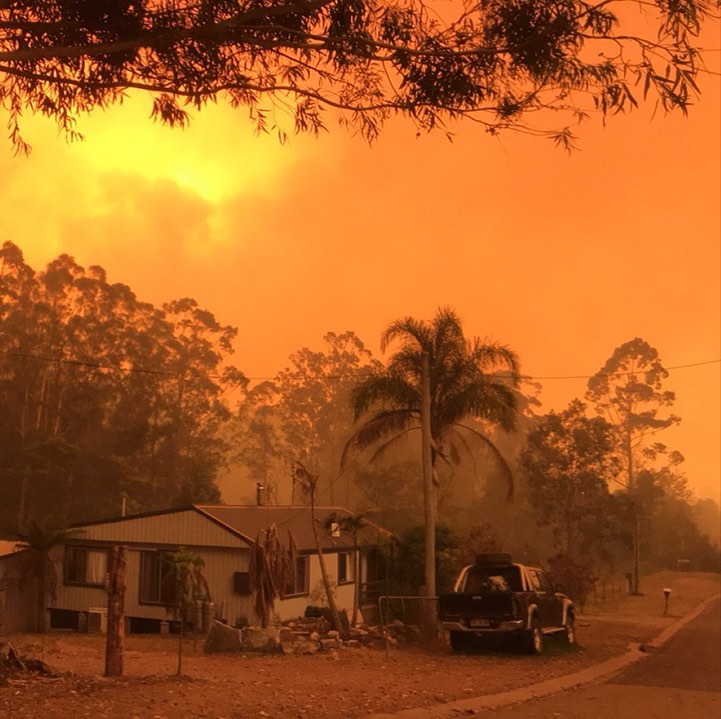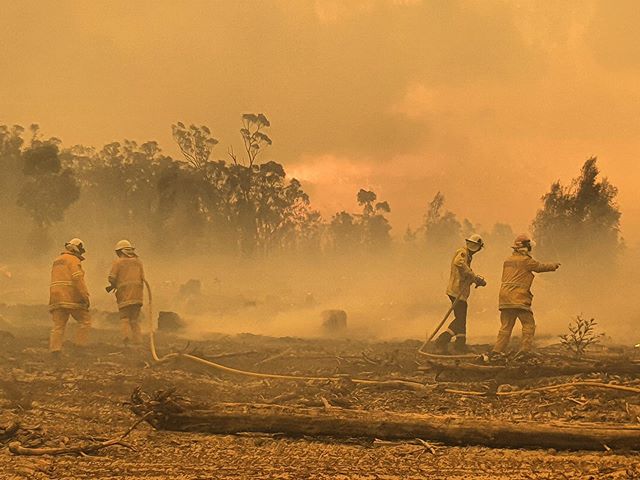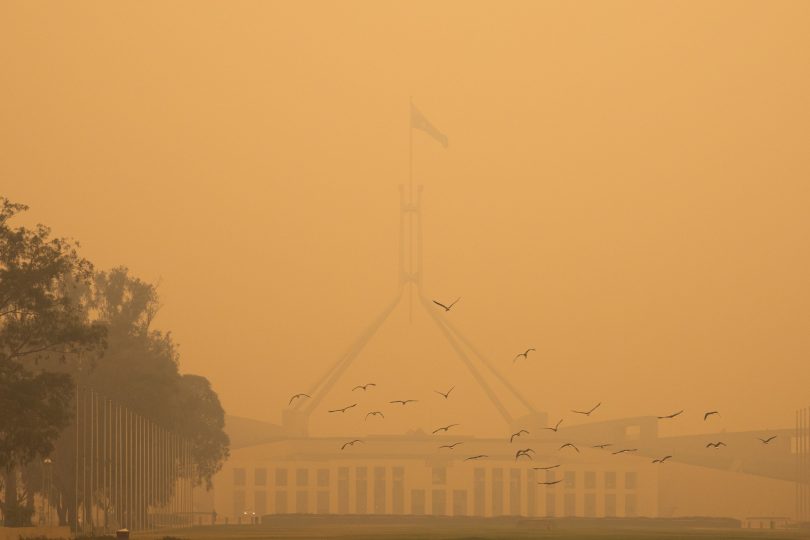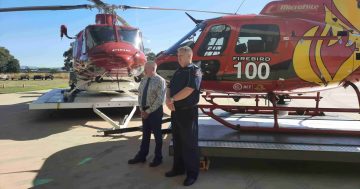
Church Street at Mogo, seven minutes before the fire came over the ridge. Photo: Macy MK.
Former emergency leaders have called on the ACT Government to provide more resources for fire and land management agencies, a self-sufficient aerial firefighting capability, an Indigenous-led cultural fire strategy and the establishment of a national climate disaster fund after the black summer bushfires.
The final report from the National Bushfire and Climate Summit says that addressing greenhouse gas emissions by reducing our reliance on coal, oil and gas is the highest priority in the face of “changes in our climate [that] are increasing the bushfire threat and reducing the effectiveness of current hazard reduction strategies”.
Written by 33 former emergency services leaders – including former ACT Emergency Services Commissioner Peter Dunn and former Chief Officer of the ACT Fire Brigade David Prince – the Australian Bushfire and Climate Plan (ABCP) has made 165 recommendations to help “protect Australians from an unprecedented era of climate-fuelled bushfires”.
SEE ALSO: Ex-ESA Chief wants Bushfire Royal Commission to address climate change.
“Climate change has pushed Australia into a new bushfire era where we must fundamentally rethink how we prepare for and manage this growing threat,” former Fire and Rescue NSW Commissioner Greg Mullins said.
“This plan outlines practical steps that all levels of government can take right now to better protect communities.
“First and foremost, the Federal Government must tackle the root cause of climate change by urgently phasing out fossil fuels to reach net-zero emissions.”

Bungendore firefighters at North Black Range on Saturday 30 November. Photo: Bill Walters, Bungendore RFS.
One of the report’s key recommendations includes the development and implementation of a national strategy on climate change, as well as health and well-being following a summer where bushfire smoke was attributed to the death of 400 people and more than 40,000 hospitalisations, public health physician Dr Kate Charlesworth said.
“The climate-health crisis is affecting Australians now, and is the number one threat to people’s health in the long-term. We urgently need a national climate and health strategy to protect Australians,” said Dr Charlesworth.
More than a third of Canberra’s summer was spent with air quality levels above hazardous as bushfire smoke blanketed the ACT. Canberra regularly had the world’s worst air quality levels on days throughout the 2020 bushfires.
The air quality in Canberra reached 22 times the hazardous threshold on New Year’s Day, dragged across from the South Coast by unrelenting easterlies.
The proposition for a new disaster fund was backgrounded against the community-led recovery effort at Lake Conjola, where the Conjola Community Recovery Association, initially helmed by Mr Dunn who is leading the recovery, had to raise $350,000 themselves to fund their own recovery.
“Cut off from outside help by closed roads, power losses and problems with telecommunications, the community banded together to pick up the pieces in the aftermath of the disaster,” the report says.

Smoke blanketing Parliament House in January. Photo: Region Media.
Mr Dunn has previously told the royal commission that the evacuation at Lake Conjola was “totally unplanned and chaotic”.
“We were very, very lucky that there were not a lot more injuries, indeed deaths, occasioned during that evacuation. The preparations for the evacuation were essentially non-existent, and it was a question of people literally throwing themselves into Lake Conjola,” he said.
“Whilst everyone was trying to evacuate down through the lake, helicopter water bombers were trying to fill their buckets in that same lake.
“It was an extremely dangerous situation.”
An independent insurance price monitor for Australians in disaster-prone areas and a fossil fuel producer levy to help fund the disaster fund were also recommended in the report.
While the report is targeted at all levels of government within Australia, it has striking similarities to evidence that has been heard and submitted to the ACT’s review of emergency services responses to the most recent bushfire season.
SEE ALSO: Broken trucks and demoralised firefighters: ACT bushfire review begins.
Over the course of the bushfire season, crews were repeatedly delayed because of mechanical problems with firetrucks and tankers, which were exacerbated by their heavy use during an unprecedented fire season.
“Due to the large number of equipment and vehicle faults, there were consequent delays in getting equipment and vehicles repaired again with an impact on operational capability,” one veteran ACT RFS firefighter wrote.
“Despite repeated attempts at repairs over many years, these problems continued under the stress of the long season while some could be overcome with changes to operating practices, some resulted in the complete breakdown of vehicles.
“In some cases, this occurred on the fire ground with an impact on operational capability and potential risk to crews.”















